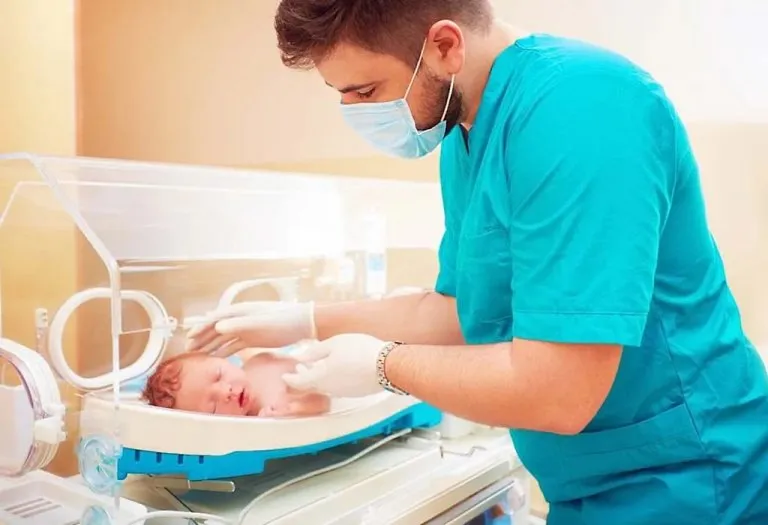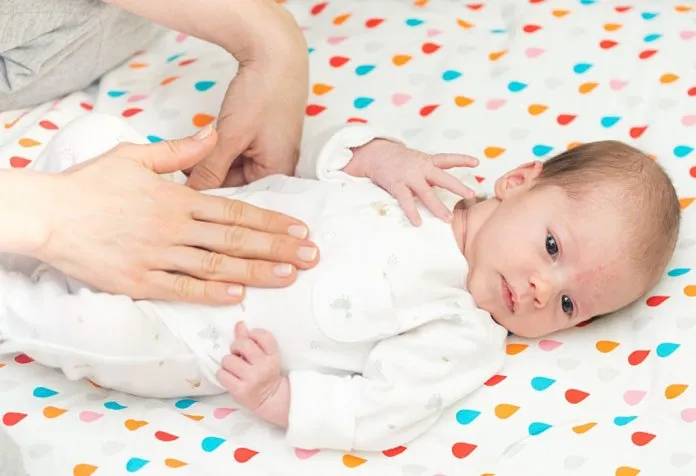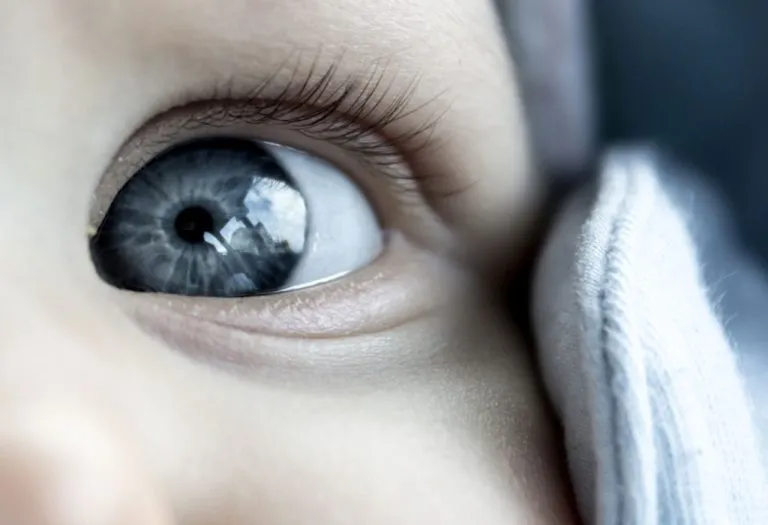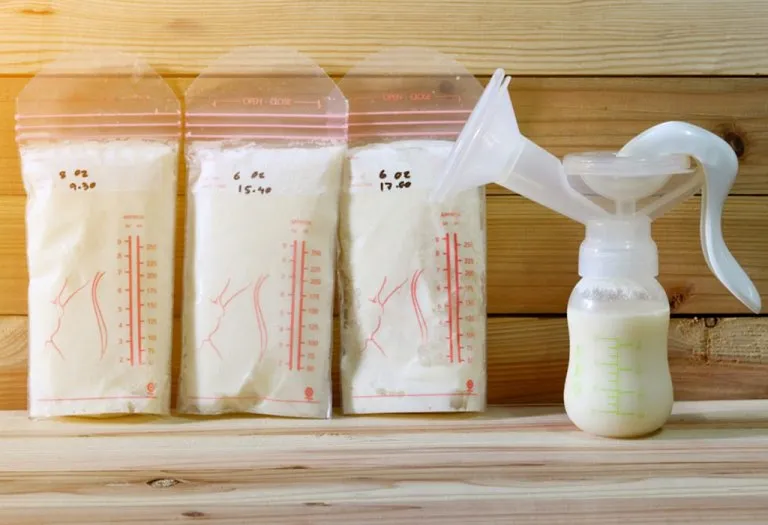Infant Incubators – Why They Are Used & Types
- What Is Baby Incubator?
- Types of Incubators for Babies
- Why Does a Baby Need an Incubator?
- How Do Baby Incubators Work?
- How Can Parents Connect With Their Infants in an Incubator?
- FAQs
You are waiting excitedly for your nine-month journey to be complete so that your baby will finally be in your arms. However, sometimes due to various reasons, your baby arrives before the nine months are over, or is born with a few issues. Your premature or sick baby will need extra care, as he is still not fully developed or strong enough. Such babies are placed in units that can give them extra care to thrive and develop. These specialized units often house advanced medical equipment, including a baby incubator, which provides warmth and protection for fragile newborns. Such places in the hospitals are called NICU (Neonatal Intensive Care Unit). Your baby requiring special care will be placed in an apparatus called an incubator in the NICU. The infant incubator has controlled environmental conditions that ensure your baby gets the right care and environment to develop. With continuous innovations, an incubator for babies now offers enhanced monitoring and support to help premature infants grow safely.
What Is Baby Incubator?
An infant incubator, commonly known as a neonatal incubator, is a self-contained unit that provides controlled environmental conditions for a premature or sick baby to live and grow. With the size of a standard crib and a clear plasma dome, it provides preemies with ideal or prescribed environmental conditions, as the babies may lack skin integrity and body fat and are not able to regulate their body temperature (1). It has holes, called ports, through which parents can touch their babies and doctors and healthcare givers medicate and care for babies (2).
Infant incubators maintain humidity levels and specialised light for jaundice (called phototherapy) and also protect premature babies from allergens, infections, excessive light, and sound, all of which might harm them, as these babies are extremely sensitive and have low immunity (3). Incubators are also helpful in treating neonatal jaundice issues, which are common in newborn babies.
Types of Incubators for Babies
There are five common types of hospital incubators most used in the NICU for the care of a premature or sick newborn baby. These are:
1. Closed Box Incubator
The closed box incubator comes with a fresh air filtration system that minimizes the risk of air-borne infections and prevents moisture loss from the air.
2. Double-Walled Incubator
A double-walled incubator comes with two walls, as the name suggests. The two walls are to prevent the loss of moisture and heat from the air.
3. Servo-Control Incubator
Servo-control incubators come with automatic settings to control temperature and humidity levels in the incubator.
4. Open-Box Incubator
Open-box incubators are also known as Armstrong incubators. This newborn baby incubator is open to the air, providing easy access.
5. Portable Incubator
Portable incubators, also called transport incubators, are incubators used to transport or move the newborn baby from one hospital to another.
Why Does a Baby Need an Incubator?
There are various reasons why a newborn baby may need an incubator. Some common reasons are:
- Premature birth – Babies born before the due date need additional time and a lot of extra care to develop their vital organs, including their lungs.
- Breathing issues – Some babies are born with lungs that contain fluid or meconium, which can lead to the inability to breathe, as well as lung infections, and hence need extra monitoring.
- Infection – A few newborn babies have low immunity, or are sick, hence are highly susceptible to infections. Incubators provide them with a protected space to keep them safe from germs and other infections.
- Gestational diabetes in mother – If the mother has gestational diabetes, then doctors keep the newborn in an incubator to monitor its blood sugar.
- Jaundice – Jaundice in newborn babies is very common. Some incubators have special lights to help in reducing jaundice (4).
- Traumatic delivery – If the mother had a traumatic delivery, then the newborn has also experienced trauma and needs constant monitoring and additional care.
- Low birth weight – If the baby is born with low weight, then it lacks adequate body fat to keep itself warm.
- Surgery – some newborn babies undergo surgery following their birth. So, they are kept in an incubator to recover from the surgery.
How Do Baby Incubators Work?
Incubators are designed to provide a controlled environment for the babies to stay safe until their vital organs are developed. A premature or sick baby needs a controlled environment to survive and develop. They have an adjustable environment where the temperature, oxygen, light, sound, and humidity can be controlled as per the baby’s requirements. Incubators protect the babies from infections, allergens, germs, and harmful risks of high light and sound. They are also used to administer various medical procedures such as feeding through an IV, delivering medications/blood, constant monitoring of vital functions, ventilating, and special lights to treat jaundice. So, an incubator not only provides a safe environment for the baby, but also helps medical professionals in treating and monitoring the baby.
How Can Parents Connect With Their Infants in an Incubator?
A new parent whose baby is placed in an incubator worries about connecting with their baby. Though the incubator keeps the baby away from the parent, there are many ways for the parent to connect with their baby inside the incubator. These ways are:
- Touching and holding their hands and feet through the holes in the incubator.
- Talking to the baby.
- Feeding expressed milk.
- Spending as much time with the baby as possible.
- Make eye contact with the baby when talking.
- Doing things repeatedly to create familiarity.
FAQs
1. Are incubators safe for premature babies?
Yes, preemie incubators are safe for newborn babies or premature babies that need special care after they are born.
2. What are several functions of an incubator for newborn babies?
An incubator for premature infants maintains an ideal temperature for a baby to prevent hypothermia, acts as a humidifier, blocks out noise, provides special lights for jaundice treatments, delivers blood or medication through an IV, and also monitors vital functions.
While no one can take the place of a mother for a sick newborn or premature baby, the need to keep the baby safe and under proper medical attention brings in the use of incubators. Though they may seem scary, they offer the perfect controlled environment and protection for the young baby to thrive and survive. In fact, a 20028 study published in Psychiatry Research revealed that post-natal incubator care for babies predicted two to three times lesser risk for depressive disorder at age 21 who had incubator care at birth (5).
References/Resources:
1. Norton Children’s – Reasons why your baby may go to the NICU
2. March of Dimes – Common NICU equipment
3. ScienceDirect – Neonatal Incubator
4. Nemours KidsHealth – When Your Baby’s in the NICU
5. Psychiatry Research – Early environment and major depression in young adults: A longitudinal study
Also Read:
Micro Preemie
Breastfeeding a NICU Infant
Health Problems of Premature Baby
When Can a Premature Baby Go Home?
Was This Article Helpful?
Parenting is a huge responsibility, for you as a caregiver, but also for us as a parenting content platform. We understand that and take our responsibility of creating credible content seriously. FirstCry Parenting articles are written and published only after extensive research using factually sound references to deliver quality content that is accurate, validated by experts, and completely reliable. To understand how we go about creating content that is credible, read our editorial policy here.























